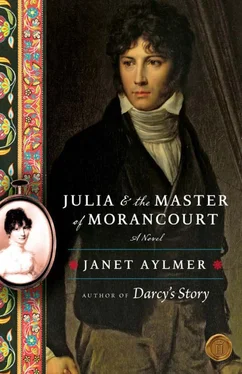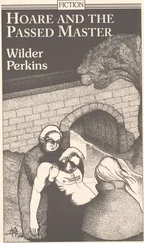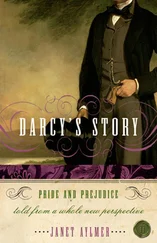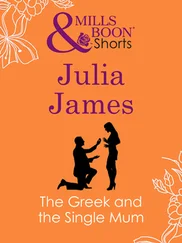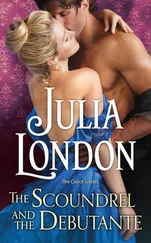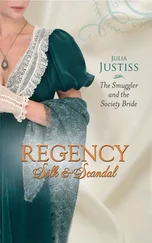During the Regency period, the divisions between social classes began to ease, although the life of titled families and the gentry was still controlled by rigid formalities. Improved methods of cultivation, husbandry, and the use of simple machinery were pioneered by wealthy farmers such as Thomas Coke of Norfolk, which led to higher crop yields, healthier animals, and increased incomes for the landed gentry. The extra food produced also allowed for a significant growth in the country’s population.
The rise in the size of the population in England by the early 1800s provided not only more young men and women to work in the new factories and mills, especially in the north of England, but also a greater number of people available to be servants in the wealthier households. Although they were sometimes abused by their employers, recent research confirms that servants working in stately homes were likely to live much longer than if they had been employed in factories or remained in a farming job in the countryside.
In the grandest families, such as the Brandons in my novel, the children might well have much closer emotional ties with the servants who looked after them than they did with their parents, who they might have seen very rarely. That seems to have been the situation for Dominic Brandon and Annette Labonne, who had been a nurse to the two sons of the Earl and Countess of Cressborough.
Indeed, servants often knew a great deal about what was happening in the privacy of the household. In my novel, Julia Maitland’s widowed aunt, Mrs. Lucy Harrison, sends her maid Martha away when they travel back to Julia’s home in Derbyshire, so that she cannot tell Julia’s family anything about what happened during their stay in Dorset with Mr. Hatton.
It is not difficult to see why a wealthy young man like Dominic Brandon, who might not know his parents very well, would decide that he did not want to live at home in the country with them. He preferred to waste away his time in London with his friends, trying to live on his allowance from the Earl whilst gambling, drinking, and pursuing young women of the commoner sort, especially since that was the example that had been set by his father.
However, not everyone was like Kit Douglas in my book or Jane Austen’s brother Edward in real life, hoping to inherit the house and estate of a wealthy and childless relative. Many young gentlemen served in the army or navy, at least for a few years. The elder son of a landed family could expect to inherit the estate, but his younger brothers might need to continue to remain in the army or navy or elsewhere in the longer term. If they did not choose a military or naval life, the Church, or, to a lesser extent, the law were amongst the few respectable options for employment open to them. But, however socially acceptable an occupation, a young man serving in the army or Royal Navy risked injury during the war with Napoléon, as was the case with Kit Douglas, or at worst might be killed, as happened to Julia Maitland’s elder brother, David, and Sir James Lindsay, the father of Kit’s friend.
The choices available to young ladies of quality were much more limited. If they were wealthy with a handsome dowry or the sole heiress to a great estate, they were not likely to lack suitors keen to marry them. But when, as in the case of the Maitland sisters, the family estate was likely to pass to a distant relation on the death of a father or brother, the situation could be much more precarious. A very attractive young woman, such as Jane or Elizabeth Bennet in Pride and Prejudice , might be sought-after because of her looks, but the lack of a respectable dowry could mean that the only viable options for a young girl might be to become a dependant helping the family in the home of a wealthy relation, or to go and work as a governess to the children of another family.
Thus Olivia Maitland in my novel was driven not only by her social ambitions for her eldest daughter to marry into a titled family but also by her concern for what the alternative might be for Julia’s future. In some ways being a wealthy but childless widow, like Julia’s Aunt Lucy (or the late Mrs. Hatton, godmother to Kit Douglas in my book), was the best situation of all, putting her in control of her own money and property, and free to do as she liked with both.
Inventions such as the spinning mule and power loom and the use of water wheels to drive machinery led to craft industries, such as weaving, being transferred from the rural homes into mills in both rural and urban locations. Other technical inventions aided the development of mining and other industrial enter prises, but their introduction sometimes led to riots and loss of life if the installation of even one machine deprived several men of their jobs.
However, many businessmen and entrepreneurs, like Harry Douglas in this story, left their old lives behind to become wealthy and prosperous, often married well, and were eventually able to buy social respectability by purchasing a handsome country house. Although some prejudice remained against “self-made men,” it often took only a couple of generations for the modest origins of a gentleman to be forgotten and for his descendants’ owning a rural estate to be fully accepted amongst the landed gentry.
By the early 1800s, many parents had become more willing to take the personal preferences of their children into account when deciding whom they should marry. However, the cachet of a title could still be very persuasive, and Julia Maitland’s mother was not unusual in being prepared to ignore the personal failings of Dominic Brandon because he was the heir to a great estate, so that her eldest daughter could have the certain prospect of becoming a countess if she married him.
But behaviour that might be seen as high spirits in well-born young gentleman was completely unacceptable in their sisters, who were expected to behave with proper decorum if they were to “marry well.” Enlightened parents encouraged their daughters to learn to read and write, either at home or by sending them to school, as well as learning household management and “genteel” pursuits such as drawing, embroidery, or playing the piano. Books, in particular literary novels, became more readily available, whether from a lending library or for sale to those who could afford to buy them.
Well-intentioned family members, such as Julia Maitland’s Aunt Lucy, could offer a valuable service by introducing young ladies to “the season” in London or a spa town. Fashionable places such as Bath and Brighton offered seasonal entertainments to rival those in London, including concerts as well as plays performed in the newly built theatres. There were other pastimes, such as visiting pleasure gardens, open to young people. The first balloon flights took place before the turn of the previous century and, by the early 1800s, were a not uncommon feature in some English towns and cities. More sophisticated carriages were developed, such as the curricle (the “racing car” of the day) and were driven by men of quality in competition with their friends, or to impress the young ladies. But their sisters usually had to be content with the occasional opportunity to take the reins of a curricle, if at all, in the privacy of the family’s estate.
Dances and other social events in places such as Bath were opportunities for young ladies of marriageable age to meet a much larger number of eligible young men than was possible in a rural area with few neighbours and at some distance from a town of any size. Initially, dancing was still a very formal affair, and there was always a chaperone for a young woman in a public ballroom. The introduction of the waltz in 1815, with the couple dancing together in a semi-embrace, was revolutionary because it allowed an intimacy between the sexes that was very different from the existing more formal dances such as the cotillion or the quadrille, which were based on a set of eight or more participants.
Читать дальше
